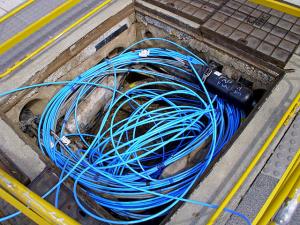Rural broadband speeds three times slower, according to Ofcom report
 Rural broadband speeds are forcing businesses to move to urban areas, according to the Countryside and Landowners Association.
Rural broadband speeds are forcing businesses to move to urban areas, according to the Countryside and Landowners Association.
A new report released by Ofcom has shown that the average speed for cities is 50.5Mpbs whereas in the countryside it is just 13.7Mbps. They have also shown that those that have a fixed broadband connection receive less than 10Mbps on average.
The report acknowledged that average speeds rose by 27 per cent in 2015, from 22.8Mbps to 28.9Mbps. It attributes this speed increase to better services, the improvements in superfast broadband coverage as well as the fact that more than two-thirds (66 per cent) of residential connections now receive the universal service obligation speed of 10Mbps.
Commercial fibre should be installed in around 95 per cent of homes by 2017 according to the report and for those areas of the country that cannot get superfast broadband, the government is offering vouchers for satellite broadband.
However, despite some improvements, the report showed a level of concern over the gap in broadband speeds between rural and urban with speeds being over three times faster in urban areas. Ofcom stated that the reduction in speeds in the countryside is explained by the lower availability of fibre and slower fibre to the cabinet (FTTC) speeds.
Christopher Price, Director of Policy at the CLA, commented: "In England and Wales, there are more than 600,000 rural businesses, and this is one of the greatest barriers to growth in the countryside.
"Poor or non-existent broadband puts rural communities at a major disadvantage to competitors in urban areas."
He added that people in the countryside have been "suffering for far too long" with poor broadband connections.
hSo provides managed networks designed for business. To get an instant cost for a leased line at your location, visit our online leased line price checker.
(Image: Bidgee)







